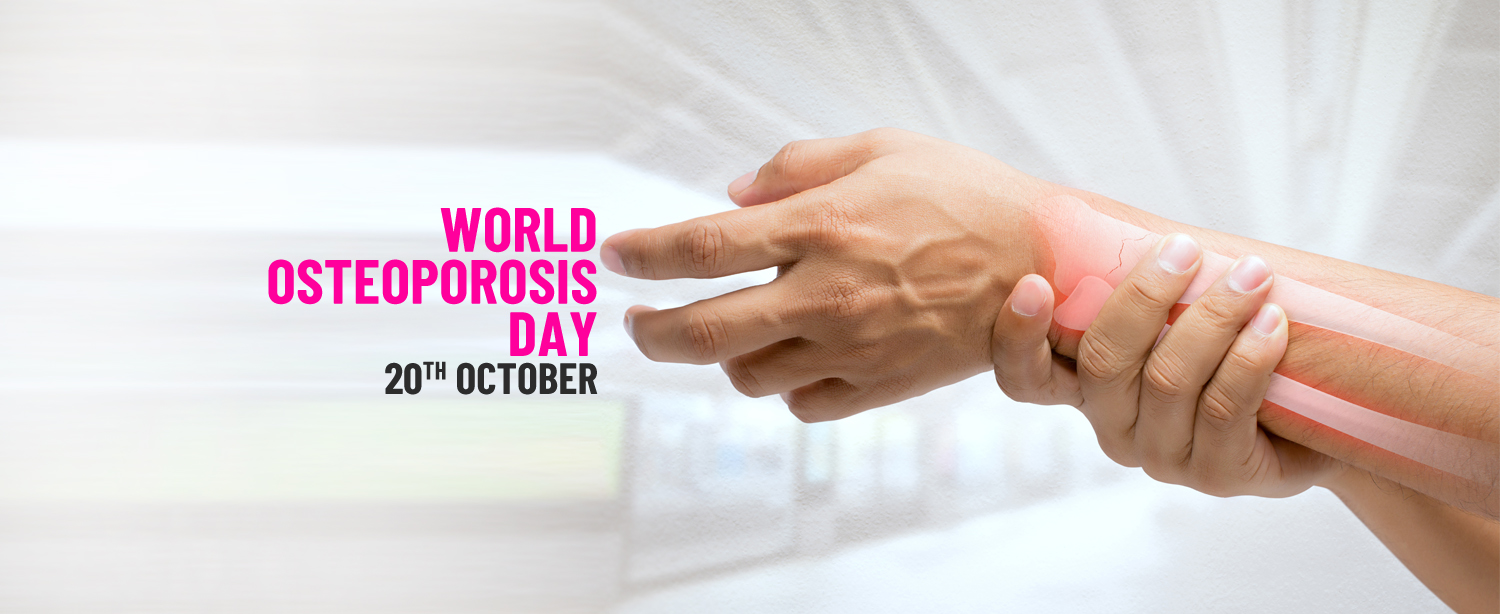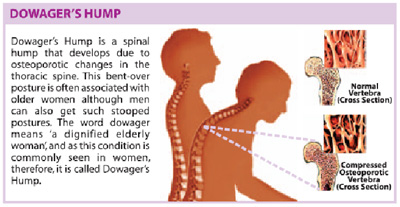Just thinking about your relative who suffered a fracture in a minor fall? It’s possible that this was caused by osteoporosis. Osteoporosis affects an estimated 50 million Indians, however, the majority of them go undiagnosed and untreated. The world sees approximately one osteoporotic fracture every three seconds. Osteoporosis is a term that literally means “porous bone.” It is a condition where bones become thin and lose their strength, as they become less dense and their quality is reduced. This may lead to broken bones, which cause pain, disability, and make everyday activities extremely difficult.
Osteoporosis is a condition where the quality, quantity, and strength of your bones is reduced, making them more likely to break. One in three women and one in five men over the age of 50 will be affected by a bone fracture due to osteoporosis. Over 200 million people worldwide are affected by osteoporosis.
Symptoms of Osteoporosis
Osteoporosis develops when bone density decreases and the risk often increases with age. It usually causes no symptoms and is often called a silent disease Many people detect it when they suffer a broken bone from a minor fall or bump. Here are some of the common symptoms that must be noted and checked with a doctor:
- Stooping back.
- Loss of height.
- Shortness of breath.
- Bone fractures.
- Lower back pain.
How does Osteoporosis Develop?
Your bones develop and grow from birth to adulthood until they achieve peak bone mass in the early twenties, when they are at their strongest, densest, and least likely to fracture. Bone is regularly replaced throughout life, with new bone replacing old bone ones. But for people suffering from osteoporosis, more and more bone is lost and not replaced. This causes the bones to become brittle and more likely to break over time. Early diagnosis and treatment is important because one broken bone increases the risk of suffering yet more broken bones. Fractures due to osteoporosis have a devastating impact on millions of people worldwide and result in enormous socio-economic too.
Risk Factors of Osteoporosis
If you are over the age of 50 and you have one or more risk factors you should discuss these with your doctor and ask for an assessment of your bone health status. Lifestyle changes may be recommended and, for those at high risk, medication may be prescribed for optimal protection against fractures. These factors highly increase your risk of osteoporosis:
- Women over the age of 50 years.
- Thin and small body frame.
- Family history of osteoporosis.
- Smoking.
- Excessive alcohol consumption.
- Lack of exercise.
- Diet low in calcium.
- Certain medical conditions.
- Insufficient intake of vitamin D.
Protect your Bone Health
Though osteoporosis usually occurs in older people, its underlying causes can stretch back to childhood. Your lifestyle, your dietary habits, family history and even certain medications can all adversely impact bone health. Here are a few steps to take for healthy bones:
- Exercise regularly
Weight-bearing, muscle-strengthening, and balance-training exercises are highly recommended. - Eat a healthy diet
Calcium, vitamin D and protein are the most important for bone health. Get safe exposure to sunlight too for sufficient vitamin D. - Avoid negative lifestyle habits
Maintain a healthy body weight, avoid smoking and say no to alcohol. - Know your family history
If you have a family history of osteoporosis, you must discuss it with your doctor and take preventive steps. - Get tested
It is important to get your bone density checked and take medication or make lifestyle changes if required.
Treatment at Kokilaben Dhirubhai Ambani Hospital
Our Centre for Bone & Joint is a comprehensive centre dedicated to bone, muscle, and joint health. It provides a wide range of care that includes diagnostic care, bone density tests, medication, physiotherapy, dietary guidance, and preventive care. We help you or your family reduce the risk of and manage osteoporosis better. Our goal is to assist our patients in living a more pleasant life while easing their symptoms. Our specialists have access to cutting-edge technology and offer the most advanced multidisciplinary treatments. Please find below the website link for further information: https://www.kokilabenhospital.com/departments/centresofexcellence/centrefor_bonejoint.html



